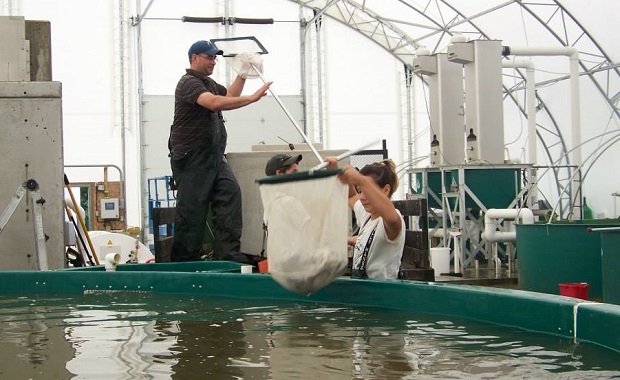
News
Regulations
Research
Regulatory issues, cost, low returns hinder RAS in British Columbia
February 15, 2023 By Nestor Arellano
 (Image from Taste of BC Aquafarms)
(Image from Taste of BC Aquafarms) A report from the British Columbia Ministry of Agriculture and Food has found that the development of recirculating aquaculture system (RAS) industry in the province is being held back by regulatory uncertainty, high capital cost, low returns on investment, and lack of incentives.
“We have concluded from our research and analysis that RAS development in BC is possible, but at smaller scales and not in isolation from the larger aquaculture sector currently operating in BC,” the report commissioned by the Canadian provincial government said. “A large, diverse sector is required to provide skilled labour and help support critically needed supply chains and research, development, and innovation.”
“We estimate that it will be at least ten years before a significant RAS production sector is operating at steady state in British Columbia,” according to the report. The Province of B.C. commissioned Counterpoint Consulting Inc. in 2021 to provide an economic analysis of farming salmon using RAS technology. The report was published in 2022.
Among the top high priority recommendations of the report were:
- Development of a long-term vision for seafood sector growth, including objectives, targets, and supports
that would encourage investment, reconciliation, food security and rural development, with specific
targets to support economic growth of RAS salmon farming in BC - Deregulation of the licensing of RAS aquaculture where there is no impact on fish or fish habitat
- Decoupling of aquaculture operation licences and permits from regulatory compliance requirements to
ensure that issues of concern (food safety, data reporting, water use, and environmental discharge)
are addressed - Providing a more efficient process for regulatory agencies to coordinate licensing requirements
- A review and reduction of service standards for provincial licence and permit applications to appropriate
timelines for review and approval. The report suggested a six-month approval process
Medium priorities included:
- Funding of crop insurance for RAS salmon farmers at below market prices
- Working with the federal government, make benefits available to terrestrial farmers under the Canada Agriculture Partnership available RAS salmon farmers. These benefits include loan guarantees, income stabilization, business risk management, and crop insurance
- Working with the Ministry of Advanced Education and the Canadian Research Council to establish a
Canada Research Chair in RAS aquaculture at a local research institution - Providing funding for industry-led aquaculture innovation and applied research dedicated to RAS
The report also said that capital costs to transition the existing salmon aquaculture industry in BC to land could easily exceed $1 billion.
“This report released by the province supports what salmon farmers have been saying for many years,” said Brian Kingzett, executive director for the BC Salmon Farmers Association in a press release. “Our sector strongly supports RAS technology – in fact we are experts at using RAS to grow salmon – but to move the entire sector on land isn’t a realistic option, nor is it required to protect wild salmon…The challenges identified in the report need to be addressed before we could even consider this.”
“The salmon farming sector are leaders in RAS technology since our fish spend half their life on land in hatcheries,” said Brock Thomson, innovation director for Cermaq Canada. “We are currently trialing new technologies such as semi-closed containment and hybrid systems to systematically reduce interactions with wild salmon and improve fish health. We understand land-based technology, but given the constraints faced, we do not see fully moving to land-based production as a viable solution in the remote, coastal communities where we farm.”
RAS production in BC currently represents less than one per cent of farmed salmon production. Moving current levels of ocean farm production to land, which is approximately 90,000 tons, would require a direct investment of between $1.8 billion to $2.2 billion, according to the press release from the salmon farmer’s association.
The economic analysis also states that the profitable production of market-sized salmon on a commercial scale remains “elusive”. Currently, salmon raised in ocean-based pens are grown to between five and six kilograms, while those raised in RAS facilities are harvested at less than four kilograms in most cases, further making the technology economically unviable.
For the full report, click here.
Print this page